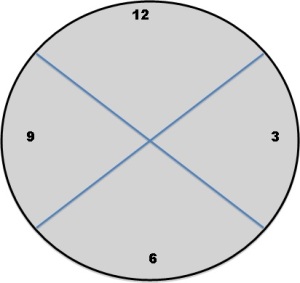
Ever since grade school, I have been an avid reader. For me, reading came naturally. I don’t recall if my parents or my older siblings read to me as a child, but I do remember submersing myself in books in 5th grade. Most likely, I was reading before then, but my 5th grade teacher really promoted reading. She had a chart on which every student was listed. Whenever we read a book, we had a one-on-one conference with her and a sticker was placed on the chart. It was an extrinsic motivator for me to see my name on the chart with the most stickers. I read over 100 books that year. Of course, as with most things, other factors also were at play. My dad died of cancer early in the school year and books provided me with an escape from reality. When I opened a book, I became a character and lived in a fantasy world. I explored canyons, treaded through snow, battled intergalactic forces, and made countless friends. When not exploring the fictional world of unreality, I sought out books that dealt with kids who were either battling cancer or watching a loved one succumb to the disease. I grieved with the characters and I healed alongside those who ventured on after loss.
When Christmas approached, the loss of my father hung heavy in the air. My fifth grade teacher, along with others members of her church, came to my door one cold night and gave all of us presents. I received the Chronicle of Narnia series, which I still have today. While I didn’t realize it at the time, this treasure book set was the perfect gift. I needed an Azlan figured in my life. I think, over the course of time, I have had several Azlans. While tragedy in never easy , it provided me with the opportunity to find a love in reading. Perhaps I would have found the love anyway, but I am fortunate I found it when I did. I can’t help but think my teacher knew the power of books stretched beyond the academic benefits. She gave me a world I desperately needed.
It is difficult for me to see students come to class and say they hate to read. Wow. I often don’t know how to respond. I do my best to bring characters to life in my classroom. Still, it isn’t always enough. I talk passionately about plot and themes. Still, I don’t always reach those seated in their desks. I supply them with various genres and inspiring stories, both fiction and nonfiction. Still, my efforts are sometimes rejected.
It is easy to surrender with my hands held high, waving the white, washed-out flag of despair, but I don’t. You see, I can’t. I can’t give up. Even as I teach the middle school beast, or sputtering sparrow, however one wants to view the adolescent children in the classroom, I trudge on. At the moment in the educational life when research indicates that the interest in reading wanes, especially if students have not habitually engaged in reading, I have hope. When students tell me they don’t’ read, or parents reveal their children do not crack open a book, I reply with “YET”. It may not happen in my class, but I put on my armor and battle the reading Goliath with all my might. I am the hero in my world, whether my students, parents, colleagues, district, or community sees it.
I have an impact. Toward the end of the school year last year, some student from the high school came to visit. After the customary comments regarding how much they loved class and wondering if the new batch of students were as crazy as they were, two of the students acknowledged they hadn’t read an entire book until they were in my class. This surprised me. Surely they had read at least one book in elementary school! When asked why, they responded with comments like the books were actually interesting and they did things in my class they hadn’t done before. I took pride in the moment. Experiences like these are my inspiration, which is why reading is my movement.
Can I reach everyone? No. I certainly can and will try to engage, welcome, build relationships, and inspire every student I meet. I am a reading gladiator devoted to reading by and through movement physical, mentally, and spiritually.
![productivity-sticky-notes[1]](https://teachingthroughmovement.files.wordpress.com/2013/11/productivity-sticky-notes1.jpg?w=296&h=300)

![thrive[1]](https://teachingthroughmovement.files.wordpress.com/2013/11/thrive1.jpg?w=300&h=300)
